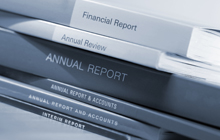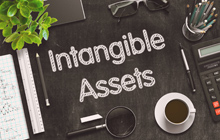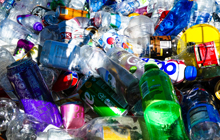Optimizing Canada's balance sheet: The untapped value of natural assets

Canada’s natural assets could one day be reflected in government financial statements, says Bailey Church of KPMG, as the tides of accounting are shifting
 |
Bailey Church is a Partner, Accounting Advisory Services, at KPMG in Canada. |
THE fight for Canada’s future as a sovereign and prosperous nation requires bold and innovative action to better leverage our country’s unique wealth — our natural assets. Canada’s vast array of lakes, forests, national parks, wildlife reserves, and critical minerals, are the envy of the world, and coveted by allies and adversaries alike. Despite this, our natural riches are valued at zero on government balance sheets. We need to quickly change this and use innovative thinking to create wealth for strategic investments in Canada’s future. A natural asset-based sovereign wealth fund would leverage those assets that are core to our national identity, while supporting both the conservation of those assets and strategic investments in national priorities to drive economic growth.
Former Prime Minister Pierre Elliot Trudeau once famously compared living next to the United States to sleeping with an elephant. Recent comments and actions from the US administration towards Canada have many a Canadian suffering from anxiety-induced sleep apnea. Concerns over Canada being annexed for access to our vast reserves of critical minerals and natural assets has many of us tossing and turning. In the spirit of Canada playing the mouse to the American elephant, we need to be proactive in leveraging these concerning motivations and capitalize on them to build a national advantage.
Canadian Public Sector Accounting Standards have for a long time prohibited the recognition of natural resources and Crown lands that have not been purchased by the public sector. An accounting principle that developed out of well-intended conservatism now places public sector financial statements in a position of being totally disconnected from where our real value lies — in our natural assets.
The accounting tides are shifting though, and they may present the opportunity we need to get our natural assets reflected, at least in part, in government financial statements. The International Public Sector Accounting Standards Board recently issued an Exposure Draft of a potential standard on tangible natural resources. This Exposure Draft proposes that a public sector entity could recognize tangible natural resources as an asset where future economic benefits or service potential associated with the natural resource will flow to the entity; the entity controls the tangible natural resource as a result of past events; and the tangible natural resource can be measured reliably.
Not all natural resources will meet this test, but it may apply to some natural assets, such as tangible resources held for conservation (such as our national and provincial parks). If even a small proportion of these assets were ultimately recognized by our federal, provincial and territorial, municipal and first nations governments, it could add billions to our government balance sheets in new assets.
Recognition of natural assets also should not equate to exploitation. On the contrary, recognition of these assets can be complemented with the issuance of green bonds — a form of debt financing for environmental projects. The funds from this financing can support the preservation of these assets, as well as strategic initiatives for Canada’s future.
The recognition of certain natural resources could be a key component in strengthening Canada’s competitiveness and ultimately guarding our sovereignty. South of the border, there is a lot of excitement around initiatives to monetize the asset side of the government’s balance sheet through actions such as revaluing the gold reserves. Some estimates suggest that this accounting measure could add up to $750 billion to the US government's balance sheet immediately, creating assets for strategic investments through a sovereign wealth fund. Canada risks falling behind and missing out on future investments essential for our prosperity and competitiveness.
A Canadian sovereign wealth fund, supported by natural assets and green bonds, could strategically invest in artificial intelligence, clean energy, sustainability, and advanced manufacturing to drive economic growth. Similar to revaluing gold reserves to generate wealth, this involves assigning value to our natural assets, thereby creating monetizable and re-deployable assets. A nature-based sovereign wealth fund would also align with Canada's climate and biodiversity priorities and should be a central part of a Made-in-Canada push to attract foreign capital.
Unprecedented times call for progressive actions, even in our accounting. The “conservative accounting” solution of waiting for an event such as a purchase, or the signing over of rights to our natural resources to justify recognizing the value of our natural assets is simply not acceptable. Another quote from Pierre Trudeau aptly sums up the current state of Canada-US relations. “We peer so suspiciously at each other that we cannot see that we Canadians are standing on the mountaintop of human wealth, freedom and privilege.” It's time to recognize our uniquely Canadian wealth.
Bailey Church is a Partner, Accounting Advisory Services, at KPMG in Canada. Bailey leads the National Public Sector Accounting Advisory service line at KPMG, and the KPMG Global IPSASB network. Title image: Alberta lake, mountains (Herman Vyverman, Pixabay).










(0) Comments